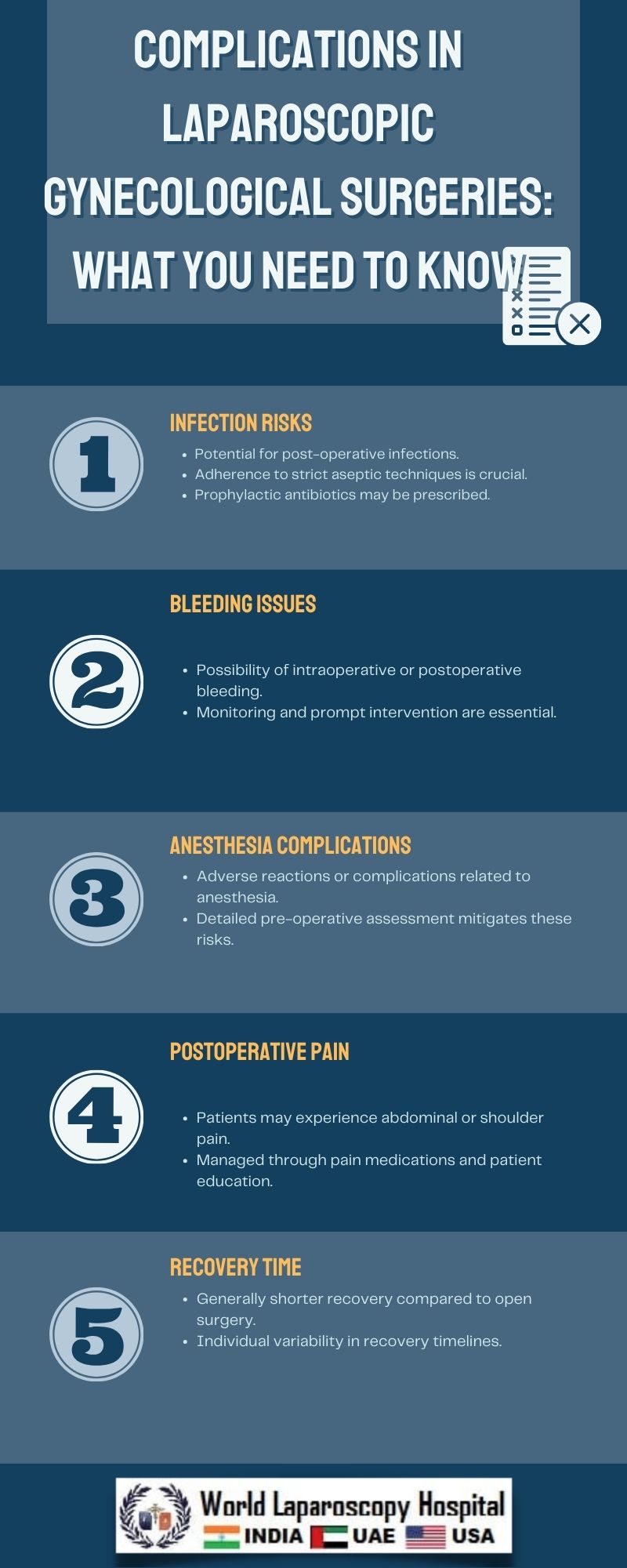Complications in Laparoscopic Gynecological Surgeries: What You Need to Know
Introduction
Laparoscopic gynecological surgeries have emerged as a revolutionary approach to treating various gynecological conditions with minimal invasiveness and shorter recovery times. However, like any medical procedure, these surgeries are not without their share of complications. Understanding these potential challenges is crucial for both healthcare professionals and patients to ensure a successful and safe surgical experience.

The Rise of Laparoscopic Gynecological Surgeries
Laparoscopic or minimally invasive surgeries involve making small incisions and using specialized instruments and cameras to perform procedures. In gynecology, this approach has gained popularity for its reduced postoperative pain, shorter hospital stays, and quicker recovery compared to traditional open surgeries.
Common Laparoscopic Gynecological Procedures
Before delving into the complications, it's essential to explore the range of laparoscopic gynecological surgeries. Some of the common procedures include:
- Laparoscopic Hysterectomy
- Laparoscopic Myomectomy
- Laparoscopic Ovarian Cystectomy
- Laparoscopic Tubal Ligation
- Laparoscopic Endometriosis Surgery
Each procedure aims to address specific gynecological issues while minimizing the impact on the patient's body.
Complications Arising During Laparoscopic Gynecological Surgeries
While laparoscopic surgeries offer numerous advantages, complications can still occur. It's crucial for both surgeons and patients to be aware of these potential issues to mitigate risks. Some common complications include:
Bleeding:
Excessive bleeding can occur during any surgery, and laparoscopic procedures are no exception. Surgeons must be adept at managing bleeding effectively to prevent complications.
Infection:
Despite the minimally invasive nature of laparoscopic surgeries, the risk of infection exists. Maintaining strict aseptic techniques and proper sterilization protocols is essential to minimize this risk.
Organ Injury:
Inadvertent damage to surrounding organs such as the bowel, bladder, or blood vessels is a concern during laparoscopic procedures. Surgeons must exercise precision to avoid such injuries.
Pneumoperitoneum-Related Complications:
The inflation of the abdominal cavity with carbon dioxide to create a working space, known as pneumoperitoneum, can lead to complications such as subcutaneous emphysema and respiratory issues.
Conversion to Open Surgery:
In some cases, the surgeon may need to convert a laparoscopic procedure to an open surgery due to unforeseen complications or technical challenges. This can prolong recovery and increase the risk of infection.
Postoperative Pain and Discomfort:
While laparoscopic surgeries are generally associated with less postoperative pain, some patients may still experience discomfort. Effective pain management strategies are crucial for a smoother recovery process.
Adhesion Formation:
Adhesions, abnormal tissue connections, can develop after laparoscopic surgeries, potentially causing pain and affecting fertility. Surgeons must take precautions to minimize adhesion formation.
Patient Selection and Preoperative Assessment
To mitigate complications, thorough patient selection and preoperative assessment are imperative. Factors such as BMI, previous surgeries, and medical history play a crucial role in determining the suitability of a patient for laparoscopic gynecological surgery. Proper evaluation allows surgeons to anticipate and address potential challenges before the procedure.
Technological Advances in Laparoscopic Surgery
Advancements in technology have significantly contributed to the improvement of laparoscopic gynecological surgeries. The introduction of robotic-assisted laparoscopy and enhanced imaging systems has enhanced precision and reduced the risk of complications. Surgeons should stay abreast of these technological developments to optimize patient outcomes.
Strategies for Complication Prevention and Management
To enhance patient safety, healthcare professionals can employ various strategies for complication prevention and management:
Skill Enhancement and Training:
Continuous training and skill development for surgeons and the surgical team are essential to improve proficiency and reduce the likelihood of complications.
Strict Adherence to Protocols:
Following standardized protocols for patient preparation, intraoperative techniques, and postoperative care can minimize the risk of complications.
Patient Education:
Informing patients about the potential complications, the importance of adherence to preoperative instructions, and the expected recovery process can contribute to better outcomes.
Multidisciplinary Approach:
Collaboration between gynecologists, anesthesiologists, and other relevant specialists ensures a comprehensive approach to patient care, reducing the risk of complications.
Continuous Monitoring:
Postoperative monitoring allows for the early detection of complications, enabling prompt intervention and minimizing the impact on the patient's recovery.
Case Studies: Learning from Experience
Examining real-life case studies of laparoscopic gynecological surgeries can provide valuable insights into complications, their management, and lessons learned. Case-based learning fosters a deeper understanding of the complexities involved and enhances the decision-making skills of healthcare professionals.
Conclusion
Laparoscopic gynecological surgeries have undoubtedly transformed the landscape of women's healthcare, offering a less invasive alternative to traditional open procedures. However, the complexities associated with these surgeries necessitate a thorough understanding of potential complications and proactive measures to mitigate risks.
Healthcare professionals must continuously update their knowledge, embrace technological advancements, and adopt a patient-centric approach to provide safe and effective laparoscopic gynecological care. By doing so, we can navigate the maze of complications, ensuring that the benefits of minimally invasive surgery are maximized while minimizing potential risks for women seeking gynecological treatment.
| Older Post | Home | Newer Post |


